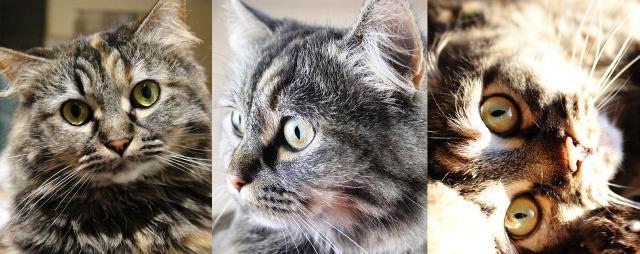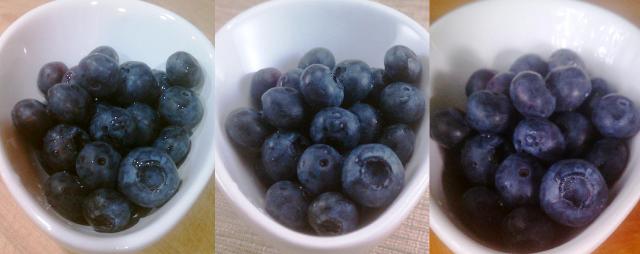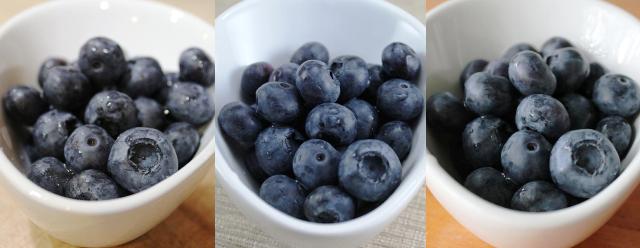
Eric says the slogan for our kitchen should be “Don’t eat that!! I have to take a picture first!” And it’s true—many of our meals are delayed slightly by a quick photo shoot before we eat. I have also started taking more time plating our food and taking care to try to make it look nice. I love the aesthetics of making food look pretty when it’s served, but I also try not to go too overboard. For example, setting up a whole little scene for the photo shoot is a little beyond what I’m up for at this particular moment.
Since I started the blog almost a year ago, I have been trying to improve the quality of the photos I post. I started out using my camera phone for all pictures I took. I have an Android and the camera on it is certainly adequate for snapping shots. But I really wanted to step it up a notch and so for Christmas, my family pitched in to help us buy by far the fanciest camera I’ve ever had—a Canon Rebel T3i. We have still only watched the first 15 minutes of the instructional DVD and have only learned one custom setting so far. But luckily that setting is the close-up portrait setting with blurred background—great for food photography. I have a lot to learn and would love to take a class someday on composing good shots and using the camera to its full potential.
One of the issues we had when I was still shooting photos with my phone was the lighting. I’ve heard many food bloggers say that taking photos in natural light or outside is the best kind of light. Last fall, when I was using my phone, we were coming into the darkest days of the year when, this far north, there just aren’t that many good daylight hours. I ended up taking most of those photos in our kitchen, which has terrible natural lighting. We had normal energy-saving light bulbs in the kitchen and all of my photos had a really yellow tint. So we replaced the light bulbs in the kitchen with (the equivalent of 100 watt) energy-saving daylight bulbs, which do not have that yellow quality. They are very bright and white and took some getting used to, but they improved the quality of the photos quite a bit. Until last week, I’ve been using the Canon to shoot photos either outside, or in the kitchen under the daylight bulb lights.
I’d read some suggestions from other bloggers for improving photography and one of the common suggestions is to make a light box. A light box is a great for photographing food at night, or if you just don’t have the right natural light for taking pictures. I finally decided last week to go ahead and try making the light box. I used this tutorial to make the light box, but I mostly used materials we already had around the house. I cut up a white sheet for the white sides and used duct tape and a box cutter we already had. I bought a box, light bulbs, and one more clippable light (we already had two) and ended up spending about $15 on the light box. I made it in about an hour and immediately Eden checked it out:
Things I try to think about when taking a photo:
- What quality do I want in the picture and what am I capable of getting at this particular time of day (i.e. do I have sun or not)? I much prefer the photo of Abigail in the sun at the top to the others, for instance, but I prefer the Canon shot of the blueberries in the light box to the cloudy day photo.
- Should I even photograph the food? In other words, does the food look appetizing? Sometimes a dish just doesn’t look pretty when it’s cooked. Sometimes it’s okay to not take a photo of the finished dish. Instead, I might take a picture of the raw materials, like whole uncooked veggies or fruit.
- What is the background and what dishes should I use? A printed pattern might work nicely for a monochromatic food item, but usually a solid color or white is a good way to go to really feature the food itself.
Here are a couple of examples of the differences in the photography. In the first, I’m using my Android phone in three different lighting environments:

In the second, I’m using the Canon Rebel in the same three different lighting environments:

As you can see, there are subtle differences in the photos. In the first set, taken with the phone camera, the kitchen and the outdoor photos are more heavily shadowed on the fruit. The one taken in the light box might be the best choice (though it’s a little blurry). And yet, the colors are truer in the outdoor photo. The berries are closest to their natural color in that one.
In the second set, taken with the Canon, I prefer the light box photo because you can see more of the berries clearly without being obscured by shadow. I also like the color the best in this one. If I had had sun outside to take these pictures, the results would have been different.
Which look do you like best? Do you have any tips for taking better food photography? I’d love to hear them!

 Follow
Follow

It’s really cool to see how much goes into the beautiful photography featured on your blog. I think it’s easy to feel intimidated by really gorgeous pictures when thinking about cooking dinner but this opens it up and makes your already accessible food seem even more feasible. Thanks!
What a nice comment. Thanks, Lucy! I felt intimidated when I first started the blog when I looked at other food blogs with much nicer photos. But I’ve tried to break it down into manageable steps of understanding how to work on getting better photos. I still have a long way to go, but I’m glad you enjoyed this post! 🙂
Ve-ry in-ter-est-ing!
I think Abigail should have an owl costume for Halloween.
“The Owl Princess” – she wanted me to let you know…”Her Royal Owlness” is also acceptable.